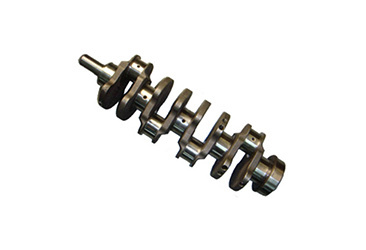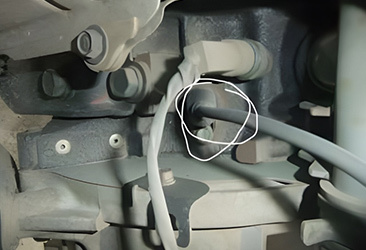The role of the crankshaft torsional damper, bearings, and flywheel.
Release time:
2023-11-22
The function of the torsional damper is to absorb the energy of the crankshaft's torsional vibrations, reduce torsional vibrations, and prevent severe resonance and its serious consequences.
1. The role of the crankshaft torsional damper
The function of the torsional damper is to absorb the energy of crankshaft torsional vibrations, reduce torsional vibrations, and prevent severe resonance and its serious consequences.
The crankshaft is a type of torsional elastic system that has a certain natural frequency. During engine operation, the magnitude and direction of the force transmitted to the connecting rod journal by the connecting rod change periodically, so the rotational speed of each crank arm of the crankshaft also varies periodically. The flywheel installed at the rear end of the crankshaft has the largest moment of inertia and can be considered to rotate at a constant speed; therefore, the rotation of each crank arm is sometimes faster and sometimes slower than that of the flywheel. This phenomenon is called crankshaft torsional vibration. Torsional vibration can easily cause power loss in the engine, lead to torsional deformation of the crankshaft, and in severe cases, even break it. Generally speaking, low-speed engines are not easy to reach critical speeds; however, for engines with many cylinders and high speeds, due to their low stiffness and large rotating mass, they have low natural frequencies and high forced vibration frequencies, making it easy to reach critical speeds and cause severe resonance. Therefore, it is necessary to install a torsional damper.
2. Structural principle
The commonly used torsional dampers in automotive engines are friction-type torsional dampers, mainly including rubber-type torsional dampers and silicone oil-type torsional dampers.
Currently, rubber friction-type crankshaft torsional dampers are used more frequently. The hub of this type of damper is fixed at the front end of the crankshaft and connects with both a pulley (front inertia disk) and an inertia disk through rubber pads. When twisting occurs during crankshaft rotation, both inertia disks have large moments of inertia with uniform angular velocity, causing significant alternating shear deformation in the rubber body and rubber pads which consumes crankshaft twisting energy and reduces resonance.
3. The role of crankshaft bearings (bearing shells)
Crankshaft bearings (bearing shells) can be divided into radial bearings and axial (thrust) bearings based on their load direction.
The function of radial bearings is to support the crankshaft; they are usually split sliding bearings where the bearing base is directly machined from part of the cylinder block's crankcase section. The sliding bearing is radially positioned and fastened by bearing caps and bolts.
Axial (thrust) bearings bear axial forces transmitted from the clutch to limit axial movement of the crankshaft while ensuring correct relative positions among various components in the crank-connecting rod mechanism. When heated expansion occurs in the crankshaft, it must be able to expand freely; therefore, there can only be one axial positioning device on it. Crankshaft bearings can also combine radial bearings with thrust bearings into multi-layer thrust bearings.
The role of flywheels
In a crank-connecting rod mechanism, a flywheel is a large heavy component with significant rotational inertia. The main functions of a flywheel include: storing energy during work strokes for overcoming resistance during intake, compression, exhaust strokes as well as other resistances; alleviating impacts on the crankshaft during motion so that it can rotate evenly; engaging with starter gear when starting an engine to drive rotation; while also using its own inertia to prevent engine stalling.
The outer edge of the flywheel has teeth pressed onto it that mesh with gears from starter generators for starting purposes.
Automotive clutches are also mounted on flywheels using their rear surface as a friction surface for power transmission.
Marks (lines or pinholes) are made on flywheel rims for locating top dead center during compression for cylinder one. When these marks align with those on an outer casing, it indicates top dead center during compression. Some may also have marks for intake/exhaust phases or oil (for diesel engines) or ignition (for gasoline engines) for installation or repair purposes.
Flywheels undergo dynamic balancing experiments together with cranks during manufacturing; they should be installed strictly according to their relative positions when disassembled or reassembled. Flywheel fastening screws bear significant forces; they should be tightened according to specified torque values using correct methods.
Latest News









